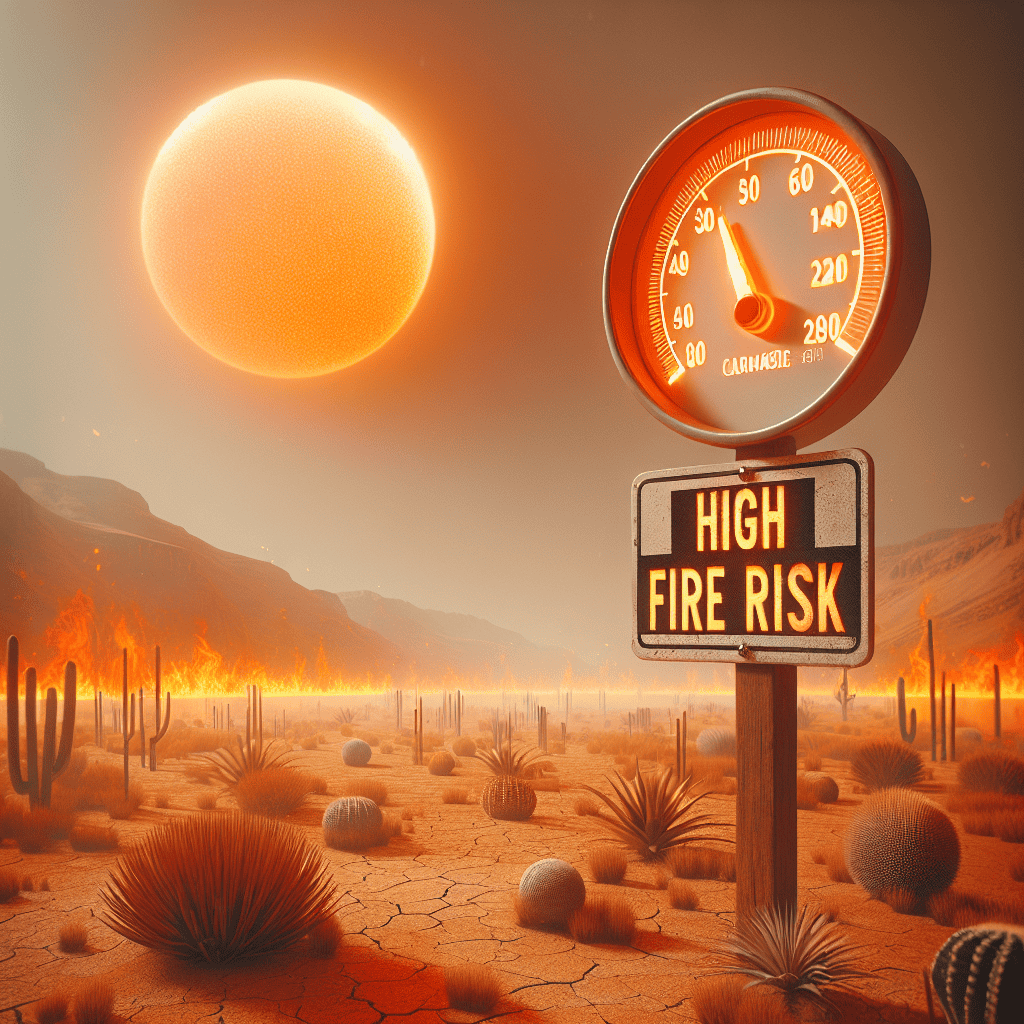Australia on High Alert as Severe Heatwave Escalates Fire Risk
Australia’s southeastern regions are preparing for a potentially catastrophic fire season as extreme heatwave conditions grip the area. Meteorologists and climate experts have raised alarms, warning that a combination of searing heat, dry vegetation, and strong winds could lead to devastating bushfires. With memories of past disasters like the “Black Summer” still fresh in mind, authorities are urging caution and proactive measures to mitigate risks during this critical period.
The Heatwave Intensifies: A Perfect Storm for Bushfires
Southeastern Australia is enduring an intense heatwave, with temperatures soaring to unprecedented levels. Regions across New South Wales (NSW) and Victoria, in particular, are experiencing relentless heat, creating a volatile environment ripe for wildfires. Experts attribute these extreme weather patterns to shifting climatic conditions exacerbated by global warming.
The factors contributing to the heightened bushfire risk include:
- Scorching Temperatures: Some regions have recorded temperatures exceeding 40°C (104°F) in recent weeks.
- Reduced Precipitation: Lack of significant rainfall has left the ground and vegetation bone-dry, perfect for fires to ignite and spread rapidly.
- Strong Winds: Hot and gusty winds are fanning any small sparks into uncontrollable infernos.
The intense heatwave isn’t showing signs of respite, forcing many communities to remain on edge over the coming weeks.
Memories of Black Summer: A Stark Reminder
Australia’s last deadly bushfire season, referred to as the “Black Summer” (2019-2020), serves as a stark reminder of the devastation bushfires can unleash. Approximately 33 people were killed, and more than 3,000 homes were destroyed during this period. The fires claimed over 18 million hectares of land and were devastating to the country’s unique wildlife, pushing species like koalas closer to extinction.
Communities in fire-prone regions are still working to recover from these scars, making the current fire warnings even more concerning. Climate advocates are once again emphasizing the need to implement stronger climate policies to address the underlying issues driving extreme weather events.
Authorities Ramp Up Preparations Amid Fire Warnings
In response to the heightened threat of bushfires, authorities have ramped up their preventative measures and emergency response efforts. Fire departments, local governments, and disaster management teams are on high alert, deploying resources to manage outbreaks and mitigate risks.
Key actions include:
- Increasing aerial firefighting fleets such as helicopters and water bombers.
- Launching public awareness campaigns to educate residents on fire evacuation procedures.
- Clearing firebreaks and conducting controlled burns to remove flammable vegetation.
- Monitoring weather conditions continuously through advanced satellite and meteorological systems.
Several local councils have also updated their bushfire action plans to ensure residents know what to do in the event of an evacuation.
A Call for Vigilance in Vulnerable Communities
Rural and suburban areas located near wooded regions are considered high-risk zones. Homeowners are being urged to take proactive measures to safeguard their properties and families. Firefighters have shared safety tips that include:
- Clearing leaves, debris, and vegetation around homes to eliminate ignition sources.
- Creating a fire-resistant perimeter using non-flammable materials.
- Keeping hoses and adequate water supplies on hand in case of fire outbreaks.
- Ensuring pets and livestock are factored into evacuation plans.
Officials are encouraging residents to stay tuned to emergency broadcast systems for the latest updates and evacuation orders. Vigilance during these critical weeks is crucial to avoiding tragedies witnessed in previous fire seasons.
The Role of Climate Change in Australia’s Wildfires
As heatwaves and bushfires intensify, the role of climate change is becoming harder to ignore. Scientists have long warned that rising global temperatures would lead to more extreme weather events, and Australia is living proof of this grim prediction.
How climate change influences bushfires:
- Prolonged Droughts: Higher temperatures are leading to extended periods of dry conditions, creating perfect tinder for fires.
- Erratic Weather Patterns: More intense and unpredictable weather, such as heatwaves and storms, make it harder to prepare for disasters.
- Increased Fire Intensity: Warmer air holds more moisture, leading to drier landscapes that burn hotter and faster.
Advocacy groups are urging policymakers to take decisive action in the fight against climate change, arguing that mitigating its effects is crucial to reducing the risks of catastrophic bushfires in the long term.
What the Future Holds for Australia’s Fire Seasons
With climate experts predicting an increase in the frequency and severity of heatwaves, Australia’s fire risks are expected to remain high in the foreseeable future. Comprehensive reforms in forest management, firefighting strategies, and urban planning are essential to building resilience against these mounting challenges.
Communities are also being encouraged to adopt more sustainable practices to combat climate change. Transitioning to renewable energy sources, minimizing deforestation, and investing in reforestation programs are steps that can contribute to both reducing greenhouse gases and restoring biodiversity.
Rallying for Global Action
Australia’s bushfire crisis is a part of a larger, global issue. Climate change-driven extreme weather events are wreaking havoc across the world, from deadly hurricanes and floods to scorching heatwaves. Global coordination and cooperation are necessary to tackle the root causes of these disasters.
International agreements, such as the Paris Climate Accord, need to be upheld, and countries must commit to reducing carbon emissions. Without meaningful action, the risks faced by nations like Australia will only escalate.
Conclusion
As southeastern Australia braces for a dangerous fire season, the heatwave’s impact is proving to be a test of resilience for both local communities and government agencies. While efforts are underway to reduce immediate risks, the broader issues of climate change and environmental sustainability must be addressed urgently. Every individual and global entity has a role to play in protecting our planet from the ravages of extreme weather.
In these trying times, staying informed, prepared, and proactive remains essential to safeguarding lives, ecosystems, and properties.


